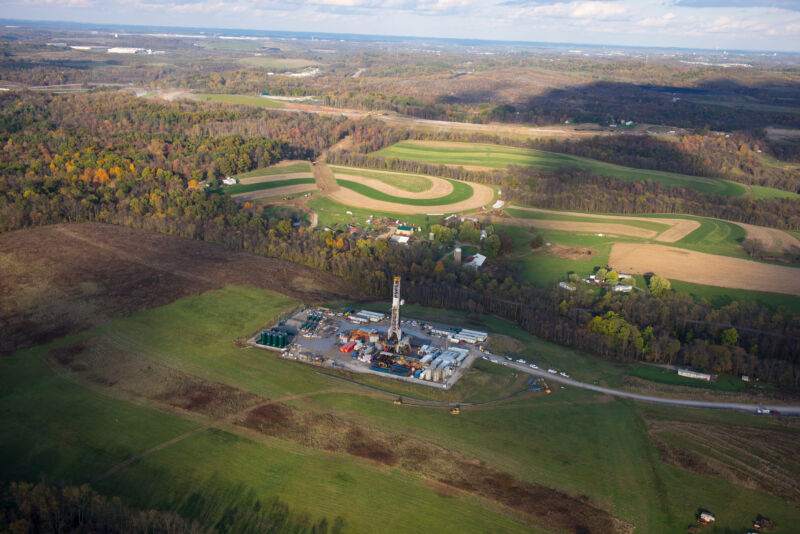Fracking wastewater has “shocking” amount of clean-energy mineral lithium

Enlarge / A hydro-fracking drilling pad for oil and gas operates October 26, 2017 in Robinson Township, Pennsylvania. (credit: A fracking drilling pad operates in the Marcellus Shale formation near Robinson Township, Pa. Credit: Robert Nickelsberg/Getty Images)
In 2007, a geoscientist at Penn State named Terry Engelder calculated that Pennsylvania could be sitting on more than 50 trillion cubic feet of accessible natural gas deposits. Engelder later revised his calculation upward, to 489 trillion cubic feet, enough to meet U.S. natural gas demand for 18 years. These massive numbers set off the fracking boom in Pennsylvania, leading to drilling across the state. Since the rush began, there have been 13,000 unconventional wells drilled in Pennsylvania.
Now, a new astounding" calculation has caught the attention of the gas industry: A study from researchers at the National Energy Technology Laboratory shows the wastewater produced by Pennsylvania's unconventional wells could contain enough lithium to meet 38 to 40 percent of current domestic consumption. Lithium is a critical mineral that's an essential component" of many clean energy technologies, including batteries for electric vehicles.
The study used chemical and production compliance data from the Pennsylvania Department of Environmental Protection to estimate that approximately 1,160 metric tons of lithium per year could be extracted from this produced water, which is a combination of fluids used for fracking and water from natural formations underground that returns to the surface during the drilling process. The lithium in Pennsylvania's produced water likely comes from ancient volcanoes that were erupting at the time the natural gas deposits were being formed. This volcanic ash contained lithium that eventually seeped into the water underground.